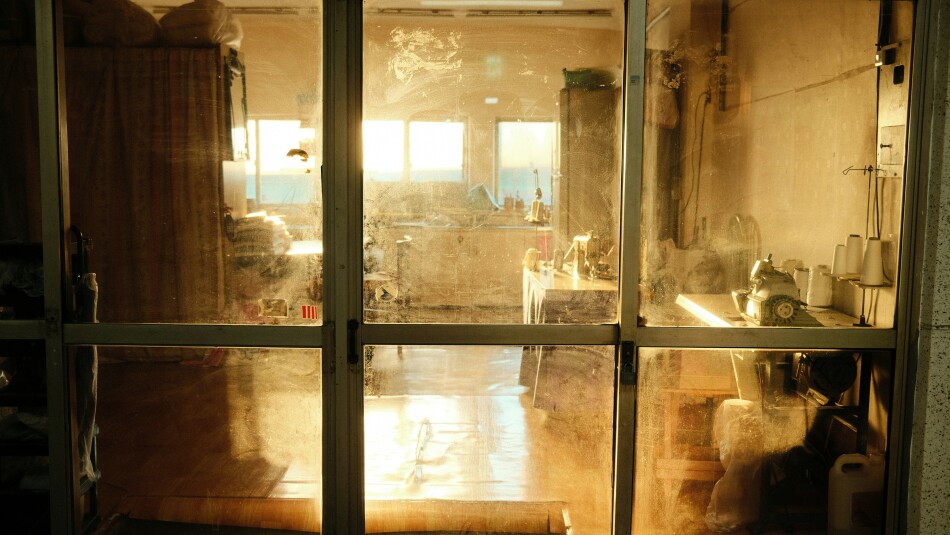
Pregnant women are unaware that their babies are paying the price for indoor air pollution IAP, mainly kitchen exposure. Poor ventilation and polluting cooking fuels in low-income homes cause high exposure, yet relevant global studies are limited.
Household air pollution was responsible for an estimated 3.2 million deaths per year in 2020, including over 237 000 deaths of children under the age of 5, according to a report by World Health Organization WHO last October.
The kitchen, sometimes considered the heart of the house because of its importance, is also the leading cause of indoor environmental pollution, due to the use of gas and oil fuels for cooking, cleaning dishes, and other utensils, and the use of various chemical cleaners.
In Iraqi society, women have the first contact with the kitchen because of their role in most families, so the main risk of in-kitchen aerosol exposure falls directly on women, especially pregnant women.
Even more dangerous, health experts say, is that the risks are passed on directly to the fetus, which most women are unaware of.
Havin Salam, married for five years and mother of one child, says she usually spends about an hour per meal in her 4-5 square meter kitchen. Her kitchen has windows and ventilation, but she says she never knew that the in-kitchen exposure was a danger to humans, especially pregnant women and their babies.
However, she says that when she cooks, she opens the window and turns on the air conditioning.
When she was pregnant, Havin cooked food on gas and often fried food, which is another reason for the pollution of the kitchen and household environment, according to Firyad Saeed, an expert in environmental chemistry.
"It is true that the use of fuels such as kerosene and coal in cooking pollute the indoor environment, but the type of cooking and the duration affects the degree of pollution, for example, frying causes more environmental pollution than boiling," he said.
Other activities in the kitchen, including cleaning materials, spraying mosquito repellent, burning candles, wood, and heating appliances, pollute the air, Saeed stressed.
Dilnya Mohammed, a mother of a nine-month-old baby, said she cooked in a two-by-three-meter kitchen with no windows when she was pregnant.
Exposure profiles of kitchen occupants showed that fuel, kitchen volume, cooking type and ventilation were the most prominent factors affecting in-kitchen exposure, according to a study conducted in 12 cities in 2022 around the world.

Image by Volodymyr Hryshchenko for Unsplash.com
In Sulaimaniya Northern Province, one of the 12 cities surveyed, five households in the city center were sampled. Overall, the study concluded that cooking with charcoal and frying food are activities that emit the most pollutants. The shorter the cooking time, the less air pollution in the kitchen.
Amanj Rahim Zangana, a gynecologist and obstetrician, says anything that affects the health of mothers will directly affect the health of the baby.
"When a pregnant mother inhales polluted air into the lungs and is harmful to her health, it directly affects the health of her baby.”
"Therefore, there are many drugs and chemicals that we have banned from mothers for the health of the baby. For example, we always ask them to stay away from bleach because if it affects the lungs and breathing, it can be transmitted directly to the baby.”
According to WHO report, around 2.1 billion people worldwide (almost 1/3 of the global population) cook using open fires or inefficient stoves fueled by kerosene, biomass (wood, animal dung and crop waste) and coal, which generates harmful household air pollution.
I had no information about these risks, but they gave me advice at the health centers when I was pregnant
In Iraq and the Kurdistan Region, health centers are open to provide guidance to women and pregnant women for the safety of themselves and their babies. For example, Havin Salam said, “I had no information about these risks, but they gave me advice at the health centers when I was pregnant.”
However, she said she suffered from vomiting, nausea, and shortness of breath during her pregnancy while working in the kitchen.
Dilnya Mohammed says she regularly uses chemicals sprays for cleaning the kitchen when cooking and sometimes felt short of breath.
According to the WHO, there is a direct link between IAP and low birth weight, in addition to other health consequences, including cancer and tuberculosis.
In addition to fetal growth weight, maternal poisoning, especially from fuel use, is one of the risks that is later passed on to the fetus.
According to the study conducted in 12 cities around the world, opening kitchen windows and doors while cooking can reduce carbon dioxide levels by up to 54 percent.
“We recommend increased cooking exhaust extraction, cleaner fuels, awareness on improved cooking practices and minimising passive occupancy in kitchens to mitigate harmful cooking emissions.”
Dr. Amanj Zangana says a pregnant woman needs a lot of help, especially in the kitchen.
"We keep telling married couples to be very careful and not to leave pregnant wives alone in the kitchen because they and their babies will be in danger."